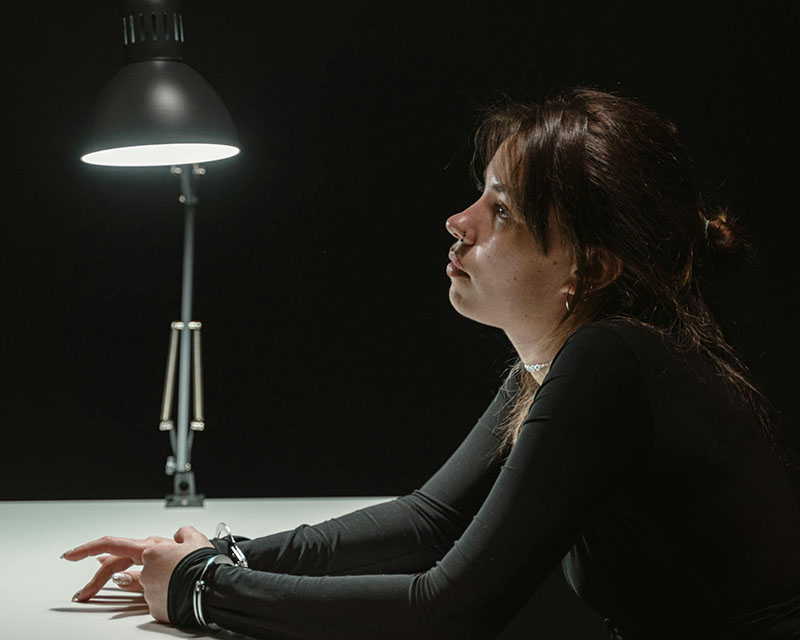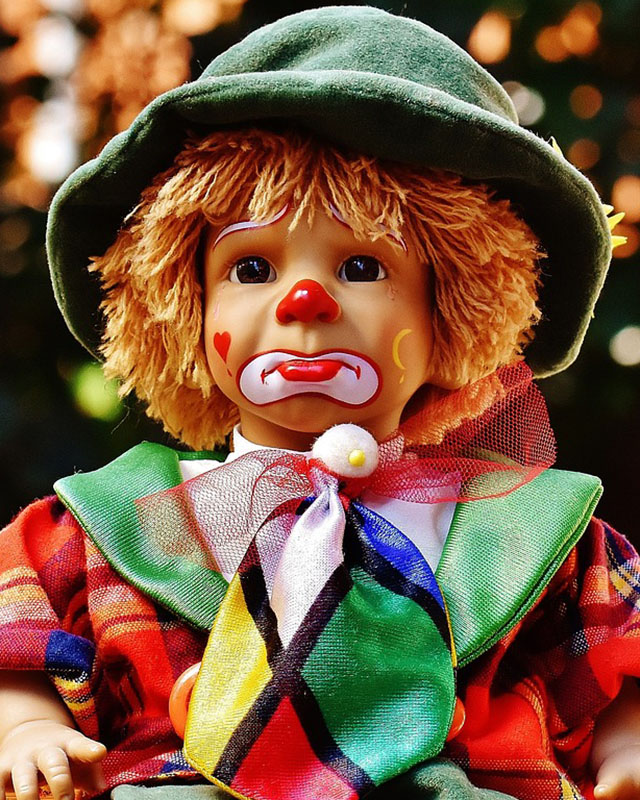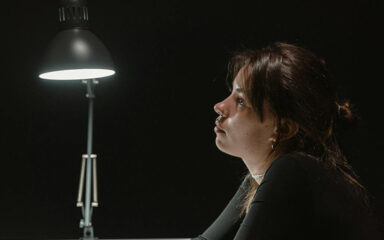
Am I comfortable in front of the camera?
Hilarious. You’re adorable. Point a camera at me, and I have a tendency to fully dissociate — just mentally bail and hope, when I return to myself, that whoever was driving my body in my absence was reasonably coherent and kept their language PG. (My track record is surprisingly good in this area.) But this tendency on my part has made me extremely sensitive about the comfort of other non-media-trained civilians forced to represent themselves or their brand on video.
We’re not talking about your standard social media video here — that’s a whole different thing, with a whole different tone and expected quality level. But when you’re making a video that’s representing your entire brand — an intro, an explainer, a product promo — it’s easy to get nervous, and stiff, and awkward. And then you feel uncomfortable about the experience, and then you feel uncomfortable about the end product because it calls up memories of the experience, even though I promise, you’re fine.
While I myself am not an asset on the business end of the camera, I have a celebrated history of helping others feel comfortable in their reluctant starring role. Thus: seven tips for feeling more comfortable in the explainer-video limelight. If you’re a business owner shooting your own video, or a SME appearing in someone else’s, I encourage you to put these tips to use. If you have a client who’s nervous about their impending time in the spotlight, I encourage you to share the tips. (Or, hell, to learn them and pretend you came up with them yourself. I’m just here to help.)
The ideal, in my mind, is always to spring for a professional production crew to ensure the highest-quality video that will make you look like the highest-quality you. But realistically, budgets are often tight, and Apple and Google aren’t lying when they claim their smartphones are capable of shooting cinema-quality video. So I’ve included tip for pro- and DIY-level video efforts. And here we go:
1. Find a production crew you feel comfortable with.
Like I said, budgets don’t always allow for a production crew, and it’s not impossible to shoot decent enough video yourself. But if you can swing even just a small crew, it can be worth the money. You’ll have someone who’s experienced at finding shooting locations, setting up lighting that will make you look like a living person, shooting b-roll, and so on. If you’re the kind of person who takes comfort in putting things in expert hands (and not everyone is that kind of person), that comfort will also translate to your onscreen presence. Different production companies have different styles, so check out their portfolio to see what their style is, and particularly if they’ve done other videos featuring civilians like you who come across the way you’d like to.
DIY tip: While there’s no substitute for experience, a decent shooting setup, at least, can be quasi-replicated on a budget. Look up advice for shooting with an iPhone and lighting your shoot with gear you probably have around the office. And take your time to set it up right and give yourself a chance to chill before jumping into the filming.
2. Trust your crew, but don’t be afraid to ask questions.
The shooting process can look unusual — the lighting can seem too bright and pointed in weird directions, some weird-looking gear might be in play, and camera-ready makeup frequently looks far heavier and more dramatic than makeup (or non-makeup) for everyday. It takes a lot of work to make the you your audiences see onscreen look like the real you they’d meet offscreen. Don’t get worried — trust the process, and wait to see what the final product looks like before pushing back.
That said, don’t be afraid to verify. Go ahead and ask the crew about any weird-looking equipment pointed your way, or to see test shots of you after everything is set up so you can be confident the clown makeup you’re currently wearing really does look natural onscreen. It’ll be easier to act onscreen like the real you if you know you’ll also look like the real you.
DIY tip: Same. If you normally wear makeup, bring it with you so you can touch it up as needed to appear healthy-person-like on camera. Grab some translucent powder to take care of unwanted shine (yes, even for guys). Don’t trust tips from makeup influencers — they only look good with three ring lights and an Instagram filter. And get those test shot to see exactly how you’ll look on camera.
3. Remember that your audience really is looking for the real you.

The reason you’re starring in your own video in the first place is so your audience can get to know you as a face — if not the face — of your own business. And as tempted as you might feel to appear extra sophisticated or extra intellectual or some other kind of extra that isn’t the real you, know that it won’t come across that way. And that’s not because you’re not inherently, in and of yourself, sophisticated or intellectual or whatever — it’s because trying to fake it will, and I promise you this, look fake.
Don’t try to use fancier words or a loftier tone than you’d use in real life. Be on camera the same person your audience will meet when they see you in person. Trying to be someone else takes energy and focus, and it’s easy to screw up. Being yourself comes naturally, if you can get out of your own way and just let it happen.
DIY tip: Same.
4. Speak unscripted, if possible.
This might, initially, sound even more intimidating than following a script, but I promise it always works usually most times. One of the best ways to look like yourself and feel like yourself is to use your own words. Come up with talking points, and have someone prepared with questions to prompt you, and speak from your heart and not your head. Allow yourself to say mostly what you want to say and not precisely what you want to say — whatever panic you’re feeling at the mere thought of having to speak without a script, it’s ten times worse when you’re trying to dig scripted language out of your suddenly locked-off brain before the judging gaze of a full production crew and the blackened pit of eternity that is the camera’s all-seeing lens.
DIY tip: Same. Sure, it’s just your own internal team and probably an iPhone and not a V-Raptor XL, but it’s still intimidating. A conversation, for which you have prepared, with someone you know is a lot easier than trying to recite lines.
5. Don’t look at the camera.
Speaking of that: Don’t look at the camera. I mean, obviously, look toward the camera, if this video is one of those talking-to-the-camera deals. Just don’t stare directly into said blackened pit of eternity that is the camera’s all-seeing lens. Look at a point just above the lens, or below, or to the side — whatever you can manage without screwing up your eyeline. (Ask the director for guidance.) Ask if they can station a person just next to the camera, and deliver your lines to that human. “Pretend the camera isn’t there” is a bear of a task, but it’s better than the alternative.
DIY tip: Same.
6. Pause, take a breath, gather your thoughts, and start again.
Sometimes, a take will go so off the rails that the director will stop the whole thing and make corrections. But a lot of the time, any correction would be minor. If you start stumbling over your words, or an idea gets away from you, it’s okay to pause — pause, take a breath, let your brain catch up with your mouth, and start again. (Advanced move: start again one sentence before your brain shut down. Not always an option, though.) Your director is used to that sort of thing and would probably suggest you do it if you didn’t take the initiative in doing it yourself. They’ll cut out the thought-gathering pause in the editing process. This isn’t 1917 — the goal is to get the best combination of clips, not a single, flawless, uninterrupted shot.
DIY tip: Same. Be sure to leave time in your shooting schedule for thought-gathering pauses, so you don’t have to feel rushed.
7. Believe that everyone involved in the production wants to make you look good.
Assuming you aren’t, for some reason, trying to shoot some gritty expose of yourself, you can trust that the entire crew is dedicated to making you look your best. (And making themselves look their best, too — if the lighting looks screwy or your hair is all over the place, it’s not going to speak highly of their work.) No matter what kind of material they have to work with, they have a vested interest in making you look good. So relax. Everyone’s on your side.
DIY tip: Same. At least, I hope you’re all on the same page about looking good.
I promise, you’re fine.
I’ve worked on a ton of videos for clients, starring clients, from explainers to introductions to some pretty emotionally gripping interviews, and not one has come off as an uggo, or a weirdo, or a doofus, or anything else — not just after the magic of editing, but even during the shoot itself. They’ve all been fine, and I can almost guarantee you’ll be fine, too. Just sit back and let yourself be fine. (Have a glass of wine before the shoot? I’d never be so irresponsible as to recommend.) Go forth and break a leg.
Not seriously. That’s just an expression. You’re not actually going to — aaand you’re nervous again.
Great.

